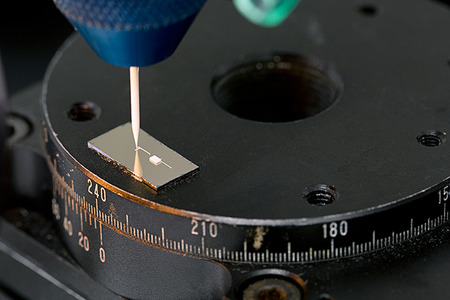Harvard materials scientist Jennifer Lewis has produced a new liquid material that could be used to 3D print lithium-ion batteries.
The “ink” is intended to be 3D printed using the syringe approach that is frequently used for bioprinting or culinary experiments.
The process to produce the liquid material is quite interesting. Printing battery anodes requires deposition of metal, accomplished through very tiny nano-particles of lithium titanium oxide, mixed in an ethylene glycol / water solution. The problem is that the nano particles clump together.
The innovation here is the addition of small ceramic spheres to the solution. When the mixture is sufficiently agitated (apparently for 24+ hours), the balls gradually break apart the clumps leaving a “smooth” solution of metal nano particles suspended in the solution.
Then it’s simply a matter of using the liquid material in a sufficiently small syringe mechanism to print battery circuits. The solution is such that it forms a liquid under pressure during extrusion and re-forms into solid form after printing.
The implications of this technology could be profound. Imagine adding another extruder to your 3D printer capable of printing this material. You could then print a physical object with embedded batteries and circuits.
It wouldn’t be an iPhone, but it’s a start.



Nice article. I think electronics will surely get revolutionized by 3D printing in a few years and in turn electronics made by 3D printing will revolutionize the world.